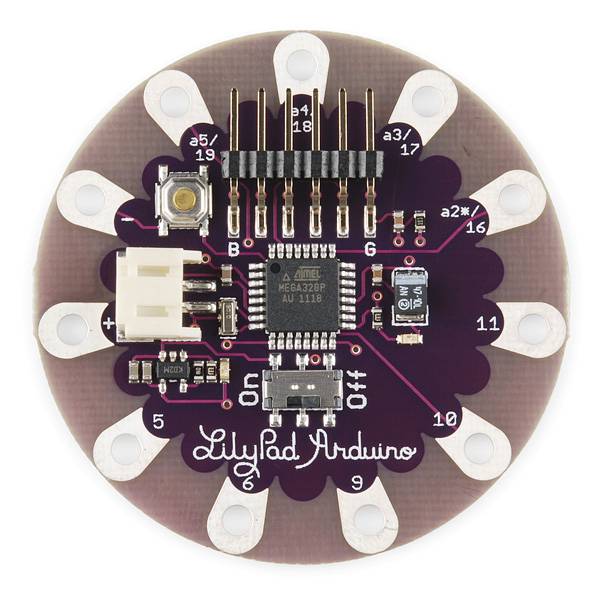Introduction to Arduino Lilypad
An Arduino-programmed microcontroller called the LilyPad Arduino 328 Main Board is created to be simply integrated into e-textile and wearable projects. To keep the LilyPad Arduino as compact (and as simple) as possible, it just has an ATmega328 with the Arduino bootloader and a minimal number of additional components.
With its big pin-out holes and ability to operate between 2V and 5V, this board is simple to stitch together and connect. With the exception of (+) and (-), each of those pins can control an associated input or output device (such as a light, a switch, a motor, or a weight. Leah Buechley may have created LilyPad, a wearable electronic textile technology, with help from SparkFun. There are numerous boards for input, output, power, and sensors. They can even be washed!
Technical Specs
| Microcontroller | ATmega168 or ATmega328V |
| Operating Voltage | 2.7-5.5 V |
| Input Voltage | 2.7-5.5 V |
| Digital I/O Pins | 14 |
| PWM Channels | 6 |
| Analog Input Channels | 6 |
| DC Current per I/O Pin | 40 mA |
| Flash Memory | 16 KB (of which 2 KB used by bootloader) |
| SRAM | 1 KB |
| EEPROM | 512 bytes |
| Clock Speed | 8 MHz |
Features:
- 5 Digital I/O pins.
- 4 Analog pins.
- ATmega328.
- Built-in ON/OFF switch.
- Simplified layout with fewer pins, giving more space for sewing or less complex projects.
- Built-in power supply socket (JST connector) for a 3.7V LiPo battery and charging circuit (no additional battery charger needed).
